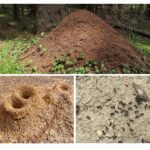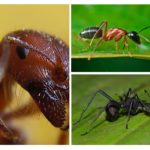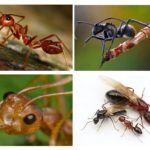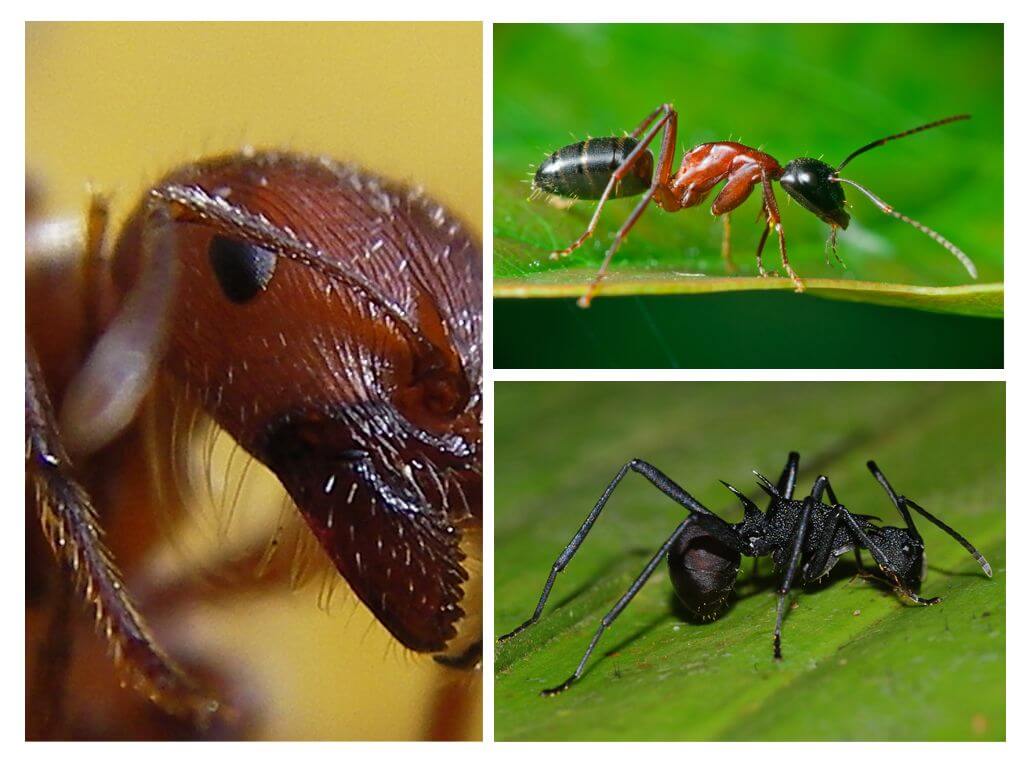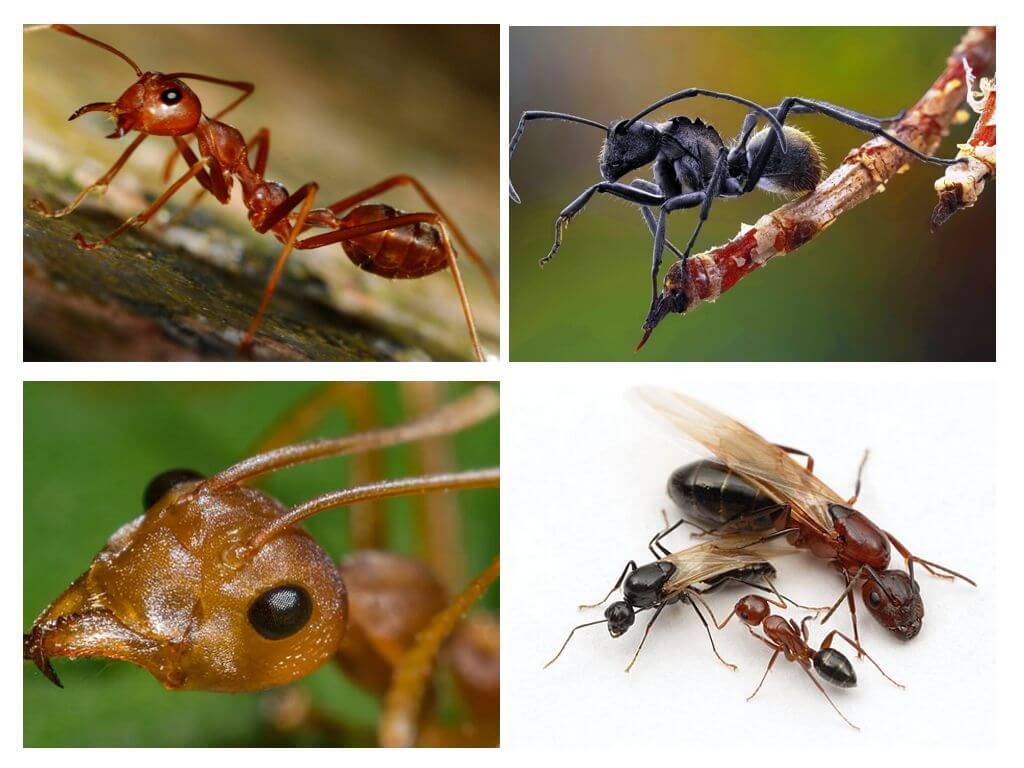Ants
Content
- Anthills
- Ant close up
- Ant body
Ants belong to the order of Hymenoptera and are members of the insect family of the ant family. On earth there are more than 12 thousand species of these creatures, differing in size and appearance. Many of them benefit the person, some are very dangerous to his health. The ant is a social insect.The following castes are usually formed: working ants, males and females. A distinctive feature of males and females is the presence of wings, which they gnaw off after mating. Working ants do not have them at all. On the features of these unique creations will tell this article.
Where live
These tiny workers are spread on the territory of all continents, the only exception is Antarctica. Insects live in anthillswho build themselves. Founders of such nests are females (womb), whose function is not only to continue the genus, but also to select the right place. Each colony has only one queen mother. All other inhabitants of the anthill feed and protect it. Photos of the anthill, where the ants live, can be seen below.
Interesting!
The males of ants die almost immediately after mating with a female. Workers ants, or as they are called foragers, take care of the rest of their family members, delivering food to them. Another function of working ants is to protect the anthill from the attacks of enemies.
However, not all are clearly divided into castes. species of ants. So black garden representatives they devote the beginning of their life to caring for eggs and larvae, in the next stage of their life they equip the nest, later their function is to obtain food. As a result, in the anthill is the largest number of living individuals.
External structure
Ants are insects that are considered among the most famous and numerous in the world. Ant size and weight vary by species. Body length can be from 1 to 50 mm. And most often the biggest ants are and most dangerous in the world. Moreover, females are usually much larger than males. Body color depends on the species.
The anatomy of an ant is quite complicated. The body of the ants is covered with a chitinous shell. This kind of skeleton not only supports, but also protects the crumbs. The description of the appearance of different representatives is almost the same. Head, chest and abdomen - such is the structure of the ant. Photos of the ant can be seen below.
Head
The head of an ant is usually of a large size, for each individual species it differs in a certain structure. It contains powerful mandibles.They carry food, used for the construction of nests of grass and twigs. Also mandibles help insects to defend themselves.
Eyes
Not everyone can answer the question how many eyes an ant has. Eyes of an insect differ in a difficult facet structure. In addition to paired there are 3 more eyes. They tiny creatures determine the level of illumination and the plane of polarization of the light flux.
Interesting!
With so many eyes, ant species are not the best sight. Most insects have myopia. Some members of this family are not able to distinguish objects, because they do not see at all. They can only respond to movement. There are also individuals that respond to the level of light in space.
Mouth
Mouth apparatus of the gnawing type ant. It includes the jaws, also called mandibles or mandibles, upper lip (labrum) and lower lip (labium). Abutments may be large and not very, overly sharp and very dull. They are also overlapping and interlocking. Thanks to this feature of the ants, the mandibles can chew food even with the mouth closed.
The tongue located on the lower lip serves as an organ of goose bumps. They insects still clean their body.
Antennae
The organ of the senses of insects is the elbows. They help ants to identify odors, catch vibrations and vibrations of the air. In addition, insects use this organ to receive and transmit signals while communicating with their relatives.
On a note!
An interesting fact is that the antennae have such a structure only in ants.
Abdomen
The abdomen of the ant stalked species (stalk form one or two rings). It can be located vertical protrusion or notch. Some species of ants at the end of the abdomen have a sting, which serves as a tool for hunting and their defense. Thanks to him, insects secrete acid - a special substance that paralyzes the enemy.
Paws
The ant has 3 pairs of well-developed legs, each of which is located on a separate pectoral segment and ends with a hooked claw. Due to this feature, the movement of an ant can occur not only along a horizontal, but also a vertical surface. A close-up photo of an ant is shown below.
From peculiarities of insect paw structure depends on the method of their movement. Not all ants move on foot, some species have the ability to jump. There are also planning insects and runner ants, red fire ants able to form bridges over water.
Paws serve as an ant, not only to move. So the front legs, equipped with special brushes, insect cares for their antennae. Spurs located on the hind limbs, used for attacks and defense. And the presence of small notches on all legs, allows insects to move even on steep smooth surfaces. An example of this is pharaoh antsable to quickly run on the glass.
Internal structure
The internal organs of the ant, which are located in the abdomen, are also unique. So the esophagus ends not with the stomach, but with the so-called goiter. His insects are used to collect food. If it is necessary to treat his kinsman, the ant belches some of the food from this secret. This is especially true for honey antswhich are also called barrels.
Nervous system
The insect nervous system includes several interconnected ganglia. So the epipharyngeal ganglion, which acts as a brain, is responsible for the thinking and behavior of insects. It is much larger in relation to the body. The ant has a particularly large brain; in females it is slightly smaller, in males it is the smallest.
Circulatory system
The blood of ants is a clear liquid - hemolymph. The spinal vessel, the heart, drives her through the body. It is a muscular tube that runs along the entire back.
Respiratory system
Respiratory system of tracheal type. Tracheal opening occurs outside stigmas (spiracles), which are located on each segment of the abdomen (on the stalk at the base of the scale).
What ants eat
Another feature of these goosebumps is the ability to adapt to the habitat. In this connection, these insects are omnivores. In spring and summer, food ants deliver food every day to the anthill. With the advent of cold weather, not all ant families fall into hibernation. The result is that they are forced to stock up on food. for wintering in advance.
Food chills are distributed as follows:
- The uterus feeds exclusively on protein. Very often, food intended for the queen is supplied by working ants in the already chewed form.
- Working ants have a carbohydrate diet. These include the soft parts of berries and fruits, plant juices, their roots and seeds. They are especially pleased to eat honeydew, which is released by the plant during an abrupt change in temperature. One more favorite delicacy of goosebumps is sugar milk aphids (pad). Have red forest ants it makes up most of the diet. Such food is more nutritious and easy to digest.
- The larvae that have emerged from the pupa prefer protein food, which is contained in the remains of small insects, as well as in eggs of various pests. For example, home ants are not averse to eat even homemade products: cottage cheese, meat, cheese or eggs. The younger ant generation will not refuse from domestic cockroaches Prusaks.
Lifespan
Lifespan The tiny creatures depend on their functional responsibilities. Working ants live 1-3 years, and larger species of insects live longer than tiny ants.Much shorter life expectancy of representatives of this family living in tropical areas than those living in cold regions.
Interesting!
How much does an ant sleepdepends on its position in the ant community. The longest sleep in the uterus.
Ant males live quite a bit - just a few weeks. Individuals who participated in mating can be destroyed by stronger tribesmen, predatory insects, or any small animal.
The largest survivor of the ant colony is the queen queen, whose life expectancy can reach up to 20 years. Ants soldiers live longer working individuals. Ants live even longer, spending most of their life in an anthill.

